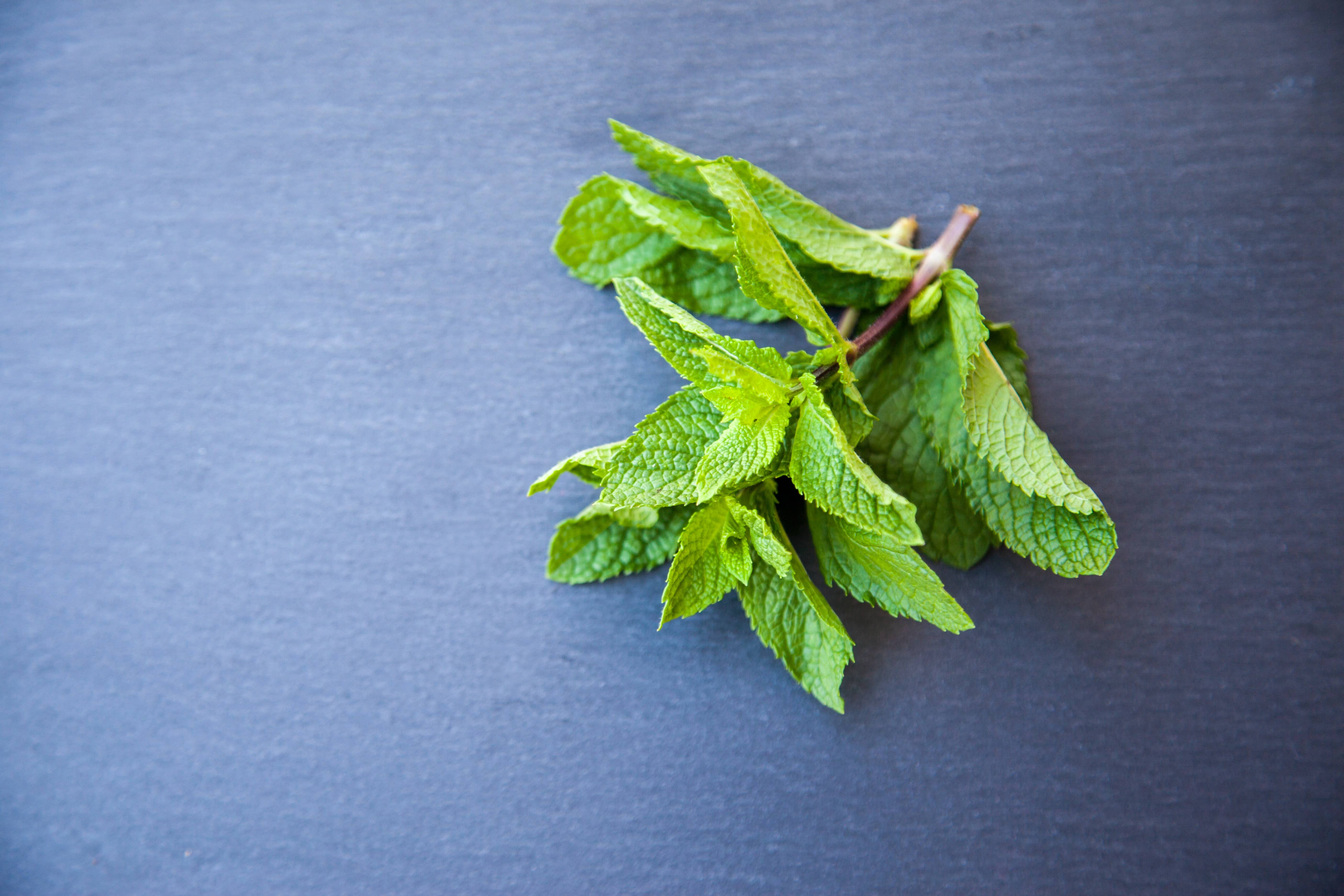
Mint is a plant known for its aroma and flavor, although it is also widely used in the world of traditional medicine. Its properties provide a large number of health benefits, which is why its consumption has always been highly recommended.
Below we will tell you everything about peppermint and the reasons why you should include it in your diet (beyond mojitos).
¿ What is it ?
There are many people who confuse peppermint with mint, because it really is an aromatic plant of the same genus ("Mentha Spicata"). Its name comes from the Latin "spica", which means "spear" and it receives it from the shape of its leaves. It seems to be of European, African and Asian origin, which is why different cultures have taken advantage of its properties for centuries.
It is in its leaves where we find different natural chemical substances that provide healthy effects for the body. Mint is a very easy plant to grow (possibly you have had it at home) and it can be added to your diet in a simple way.
You do not have to fear for the calories it provides, because they are very few since they barely contain fats and carbohydrates. It does not contain any sugar, it is rich in water, calcium, iron, magnesium, phosphorus, potassium, sodium and Vitamin C.
Differences with mint
Peppermint and spearmint are similar plants, but have different consistencies and benefits. Derived from spearmint, peppermint (mentha piperita) contains more than 30% menthol and up to 0,2% carvone. Carvone is a substance found in many plant essential oils. On the other hand, peppermint contains up to 70% carvone and only up to 1% menthol.
Both plants can help relieve digestive symptoms and nausea. They also provide some pain relief.
However, peppermint works best to relieve respiratory and skin symptoms, while spearmint can work as an anticonvulsant and helps activate white blood cells in a person's blood. Peppermint is a stimulant, while spearmint is a sedative.

Advantages
Mentha spicata has as many properties as benefits it brings to the human body. The best known are the flavor and aroma in food, but medicinally we can also benefit from it.
prevent diabetes
The latest studies ensure that peppermint controls the lipids that circulate through the bloodstream. Taking this plant reduces cholesterol and triglyceride levels, so it can positively influence the prevention of diabetes.
Promotes digestion
For sure this is one of the best known properties. Taking it in infusions is not simply for the flavor it provides, but because it is effective in relieving stomach pain and indigestion.
Peppermint can relieve digestive symptoms such as gas, bloating, and indigestion. Studies indicate that it relaxes the digestive system and can relieve pain. It also prevents smooth muscles from contracting, which could relieve spasms in the intestine.
Although no studies have examined peppermint tea and digestion, it is possible that the tea may have similar effects.
Relieves irritable bowel symptoms
Continuing in relation to the digestive system, it also improves the symptoms of irritable bowel. That is, it considerably reduces excess gas and stomach pain. Peppermint relaxes the muscles in the system and allows these symptoms to improve.
Irritable bowel syndrome (IBS) is a common disorder of the digestive tract. It is characterized by digestive symptoms such as stomach pain, gas, bloating, and changes in bowel habits. Although treatment for IBS often includes dietary changes and medication, research shows that taking peppermint oil as an herbal remedy may also be helpful.
The oil contains a compound called menthol, which is believed to help alleviate IBS symptoms through its relaxing effects on the muscles of the digestive tract.
Has antispasmodic and analgesic effects
Peppermint oil is a perfect muscle relaxant both when consumed and when used on the skin. It seems that the action of menthol causes a reduction in pain, which is why it is considered a plant with analgesic properties.
For this same reason and for its cooling effect, they say it relieves the pain of minor burns. And, from my own experience, it also reduces the itching of nettles. They are plants that usually grow together, so take note of this advice if you are a regular in the field.
Freshens breath
There's a reason spearmint is a common flavoring for toothpastes, mouthwashes, and chewing gums. In addition to its pleasant smell, peppermint has antibacterial properties that help kill the germs that cause dental plaque, which can improve breath.
In one study, people who had undergone spinal surgery and received a rinse made with peppermint, tea tree, and lemon oils experienced an improvement in bad breath symptoms, compared to those who did not receive the oils. .
Reduces headache
Since peppermint acts as a muscle relaxant and pain reliever, it can decrease certain types of headaches. The menthol in the oil increases blood flow and provides a cooling sensation, possibly relieving pain.
In a study in people with migraines, peppermint oil applied to the forehead and temples significantly reduced pain after two hours, compared to a placebo oil. In another study, peppermint oil applied to the forehead was found to be as effective for headaches as 1000 mg of paracetamol.
Although the aroma of mint tea can help relax muscles and improve headaches, there is no scientific evidence to support this effect. However, applying oil to the temples can help.
Reduces bacterial activity
Peppermint has different modes of action on bacteria, but above all it exhibits its bactericidal properties. This is due to the presence of phenolics that act as pro-oxidants and reduce bacterial activity.
Although there are no studies on the antibacterial effects of peppermint tea, peppermint oil has been shown to effectively kill bacteria. In one study, peppermint oil was found to kill and prevent the growth of common foodborne bacteria, including E. coli, Listeria, and Salmonella in pineapple and mango juices.
Peppermint oil also kills several types of bacteria that cause illness in humans, including staph and pneumonia-related bacteria. Additionally, studies indicate that peppermint reduces several types of bacteria commonly found in the mouth.
Improves cold symptoms
As we said before, it improves the functioning of the immune system, one of its best properties being decongestant. In fact, there are several over-the-counter menthol drugs. Even so, it must be admitted that mint itself does not have a decongestant function, but the refreshing sensation is what causes that effect.
Peppermint has antibacterial, antiviral, and anti-inflammatory properties. Because of this, the infusion can combat sinus obstruction due to infections, the common cold, and allergies.
Additionally, research shows that menthol, one of the active compounds in peppermint, improves the perception of airflow in the nasal cavity. Therefore, the steam from peppermint tea can help us feel easier to breathe.

Contraindications
Despite being a healthy food, mint has contraindications in children under 5 years of age, due to the possible effects caused by menthol. Even the use of oil from this plant on the skin can generate reactions Allergic, in addition to irritations in the nose and eyes.
Special care must also be taken if we suffer from stomach ulcers, heartburn or gastrointestinal problems. In principle, no problems have been shown in pregnant women or lactating mothers, but its consumption is not recommended due to the side effects that menthol can generate.
Logically, peppermint is not a super food. Taking it in moderate amounts, within a balanced diet, will allow our body to take advantage of all these properties. So forget about your dose of mint by drinking a mojito and add it to stews and salads.
Uses
We can easily add mint to green salads, desserts, smoothies and even water. Peppermint tea is another popular way to incorporate it into your diet. However, many of the studies showing the health benefits of peppermint did not involve eating the leaves with food. Instead, mint was taken in capsule form, applied to the skin, or inhaled through aromatherapy.
When using mint for health purposes, it is important to assess what it is intended to achieve and how the plant was used in research for that particular purpose. Some ideas are:
- Eat fresh or dry leaves: It is used to treat bad breath.
- Inhalation of essential oils: May improve brain function and cold symptoms.
- Applying it on the skin: It is used to reduce nipple pain from breastfeeding.
- Take capsules with food: May help treat irritable bowel syndrome and indigestion.